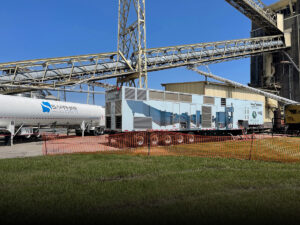It is impressive how pipelines can maintain their integrity when well maintained. It takes the use of smart inspection devices like a smart pig pipeline to help maintain channels. Examples of smart inspection devices are different types of pipeline pigs that maintenance crews implement.
Smart Pigs monitor different things during pipeline inspection, such as restrictions and malformations of the pipeline. They help assess potential leaks and anomalies like metal loss that can disrupt services or safety. Pipeline pigging is essential for natural gas transmission lines to separate dissimilar products and eliminate unwanted material.
[bctt tweet=” It’s paramount to understand terms like smart pig pipelines before taking part in the natural gas business. Read through this definition to learn about it. #sapphirenatgas” via=”no”]
Defining a Smart Pig Pipeline
Probing tools like a smart pig pipeline are essential in maintaining the integrity of a channel. A single pig can cost up to $1 million. PIGs have sensors and magnets for data transmission.
In the past, they were known as pipeline inspection gadgets but are now pipeline integrity gauges. Smart pigs are part of that comprises of a pig launcher and pig receivers as well.
Types of Pipeline Pigs
Typically, there are three types of pipeline pigs: utility pigs, In-Line inspection pigs, and gel pigs. A utility pig cleans, separates, and dewaters a pipeline. Utility pigs also come as sealing pigs that help separate dissimilar products.
They also come in various forms, such as spherical pigs, polyurethane foam pigs, mandrel pigs, and solid cast pigs. Foam pigs can navigate through a 90-degree bend radius. In-Line Inspection, ILI, pigs produce reports on the state of the pipeline. Finally, gel pigs work along with utility pigs in dewatering, cleaning, and drying.
Cleaning Pigs for Natural Gas Pipelines
When it comes to cleaning natural gas pipelines, experts use a utility pig. Cleaning pigs remove deposits and debris.
They take three to four weeks to prepare a pipeline system for pigging. Cleaning pigs ensure that pipelines produce good data. They work by pushing natural gas in front of it into downstream systems.
Your Source for Natural Gas
Having a reliable source for natural gas is essential. Natural gas providers ought to avail smart pig pipeline information to customers. It gives said customers a chance to review safety factors in natural gas transmission lines.
Contact us to learn more about pipeline pigging and its applications.




